Longueuil looks to manage deer herd that roams between hunting grounds and playgrounds
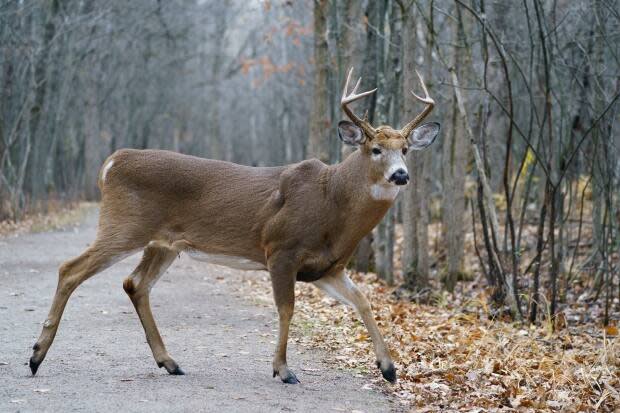
When the City of Longueuil opted to cull about 15 deer in a wooded park last fall to mitigate the herd's impact on the local ecosystem, protests became so aggressive that Mayor Sylvie Parent threw in the towel.
"The threat posed today by some people in order to harm or even thwart the one-time operation to control the deer population in Michel-Chartrand park forces us to consider another option," she wrote on her Facebook page on Nov. 23.
Now one of the leading activists who fought to save the deer is tasked with following through with his promise to relocate the animals, but his first proposal was rejected by an ethics committee over safety concerns.
The clock is ticking for Eric Dussault, head of Sauvetage Animal Rescue, as fawning begins soon. But even if he succeeds, any one the remaining deer could be shot this fall if they stray from the park because hunting is allowed in the neighbouring nature preserve, Boisé Du Tremblay.
The forest is dotted with city-issued signs that warn of seasonal hunting. That hunting is done by a handful of hunters that are carefully chosen by Longueuil to harvest a certain number of deer in an effort to control the population of about 150 deer that live in the Boisé and surrounding area.
Throughout the Boisé's 260 hectares of wetlands and woods, there are at least a dozen deer stands made of wood and metal so hunters can perch high with bow or rifle close at hand.
In Quebec, hunters harvest some 45,000 deer every year.
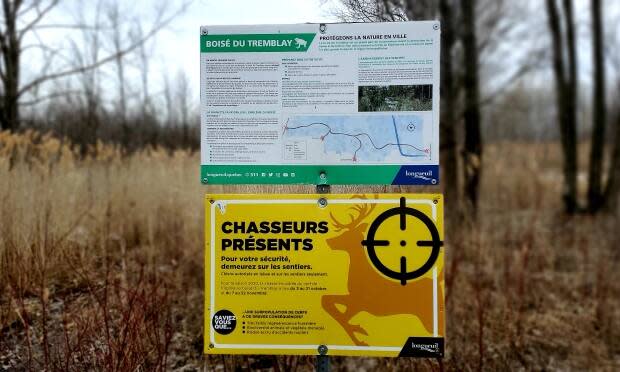
Arrows and bullets fly in Boisé
At its closest point, there is less than a kilometre between Michel-Chartrand park and the Boisé. The nature preserve abuts a stretch of farmland that, crisscrossed by a few roads and a highway, connects to Mont-Saint-Bruno provincial park.
People like Tommy Montpetit want to see green corridors woven into the urban landscape so all animals can navigate between park, preserve and farmland.
Montpetit is the conservation director for the non-profit organization Ciel et Terre which works to protect habitats throughout the Montérégie region on Montreal's South Shore.
It was his idea to use the culled deer meat to feed local food banks, but that plan fell through when protestors stepped in with petitions, picket lines and even death threats against the mayor.

Montpetit said the 30-odd deer living in Michel-Chartrand park can and do travel over to the Boisé, but they tend to stick around the park because they know they are safe from predators there. They have also become accustomed to being fed by park visitors.
While strolling through the dense forest of the Boisé, however, Montpetit has seen a diverse ecosystem thriving in the roughly six square kilometres of land that includes separate trail networks on the Boucherville and Longueuil sides of the forest.
He has seen coyote, fox, fishers, bobcats and just about every other animal known to southern Quebec.
The argument for green corridors
Even if the deer are culled or relocated, the problem will keep repeating itself, and that's why a long-term solution is needed, said Montpetit.
"Of course if you take the 15 deer out, there are going to be more deer coming," he said.
"And they're going to reproduce faster there because the environment is really good for them."
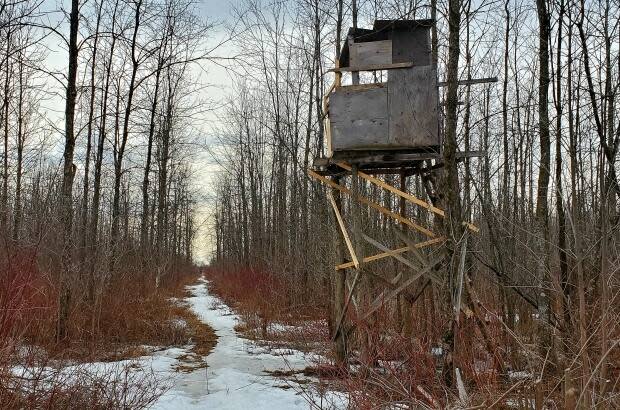
Citing southern Ontario's green belt and western Canada's vegetated overpasses, Montpetit says green corridors allow all animals, including predators, to safely cross six-lane highways and avoid fenced-in backyards.
Not only will the deer be encouraged to spread out but predators like coyotes would help balance out the ecosystem when they can travel more easily to places like Michel-Chartrand park, he said.
"We need to do this more because we have a major problem not only with deer, but with skunks and raccoons and other animals that live in these urban areas," Montpetit said.
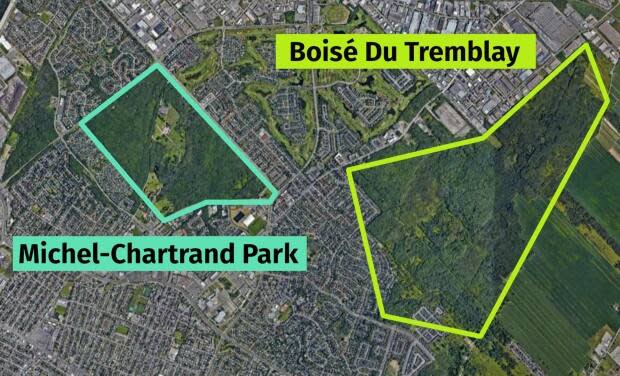
Robert Weladji, a professor at Concordia University's department of biology, said even a cursory glance at a map shows urbanization without any consideration for the movement of animals. This creates habitat fragmentation, he said.
"If we assume the two parks were originally one habitat, used by those animals, then, urbanization or development has acted as a barrier to their movement," Weladji said.
Stitched into the neighbourhoods near the Boisé and the park is a golf course, the Club De Golf Parcours Du Cerf, which could serve as a natural route for animals that could stretch all the way to the provincial park, Montpetit said.
With corridors, the young deer would have an easier time moving away from the park to live elsewhere as they get older, he said.
Ministry says green corridors may not be solution
In accordance with provincial regulations, Longueuil has overseen hunting in its territory, including in the Boisé, since 2003, said city spokesperson Chantal Legault.
Legault said green corridors and similar projects are part of Longueuil's three-year capital expenditure program between 2021 and 2023. The city is also drafting a plan to increase biodiversity on its territory, she said.
Quebec's Ministry of Forests, Wildlife and Parks says attracting predators to the area may not be the ultimate solution.
The ministry has always advocated controlled hunting as a means of management in urban and semi-urban areas, says spokesperson Dominique David.
"Controlled hunting is recognized for its efficiency and is used in many states and provinces of North America," she said.
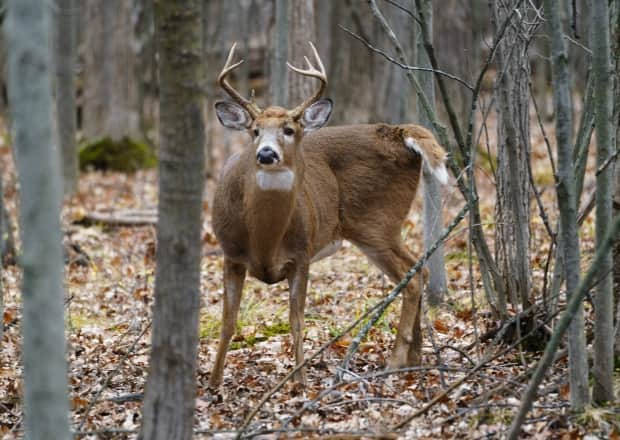
The ban on hunting in Michel-Chartrand park, coupled with mild winters, has contributed to the population boom, David explained.
Attracting more coyotes to the area isn't seen as a reliable solution because they tend to be opportunistic hunters that are more likely to feast on rodents, trash and pets in urban areas, David said.
"Indeed, although it is possible to cohabitate very well with this animal, when it is very numerous the chances of it developing undesirable behaviour with humans are higher."
As for the deer, she said, they could move between forested areas, but humans are contributing to the problem by feeding the animals.
Once tamed, deer stay where the food is rather than roaming. That then leads to the spread of disease and ticks while increasing road accidents.
The deer are also known to damage the private landscaping of neighbouring homes.
The simplest solutions is for people to stop feeding the deer, David said.

